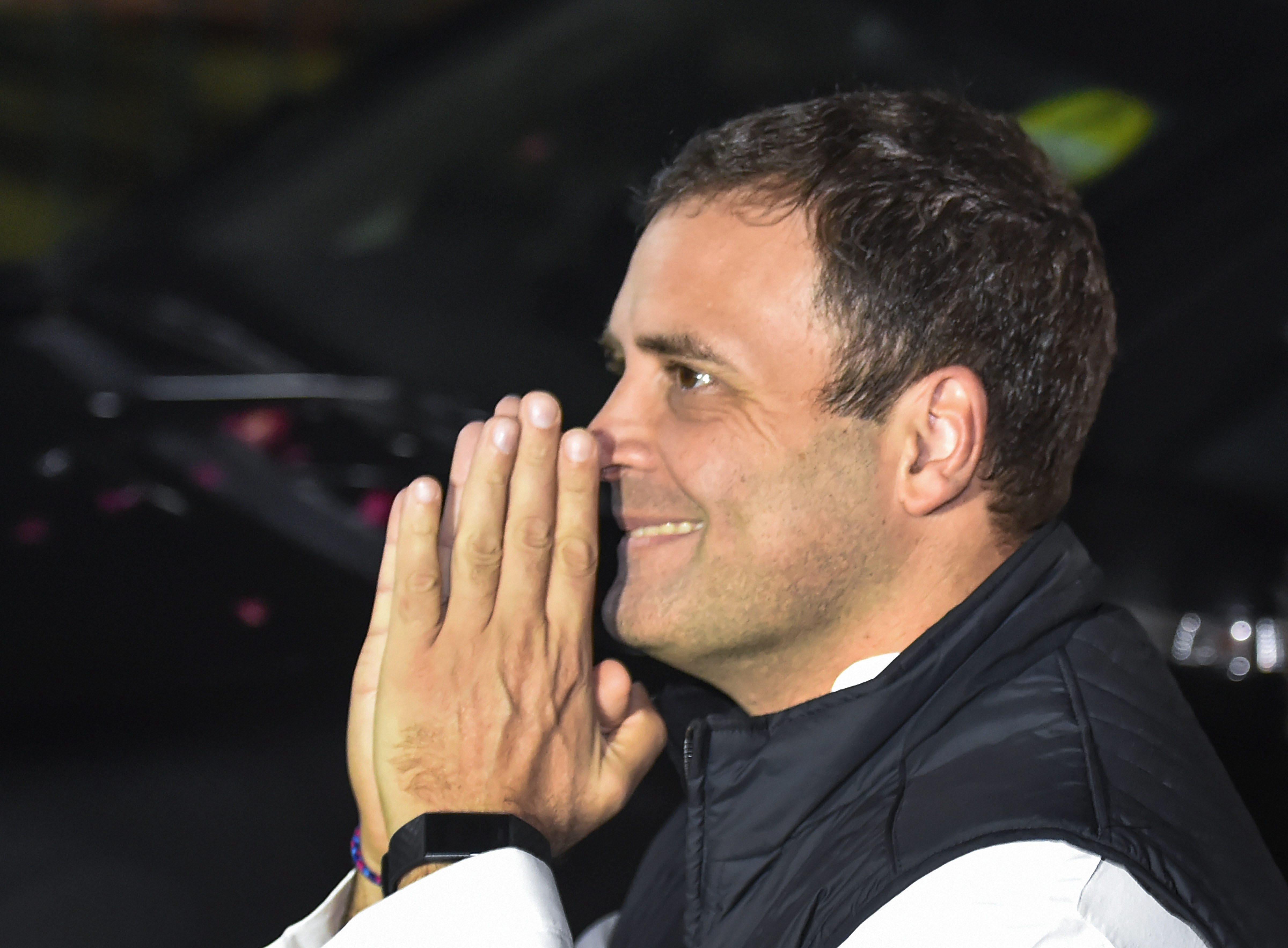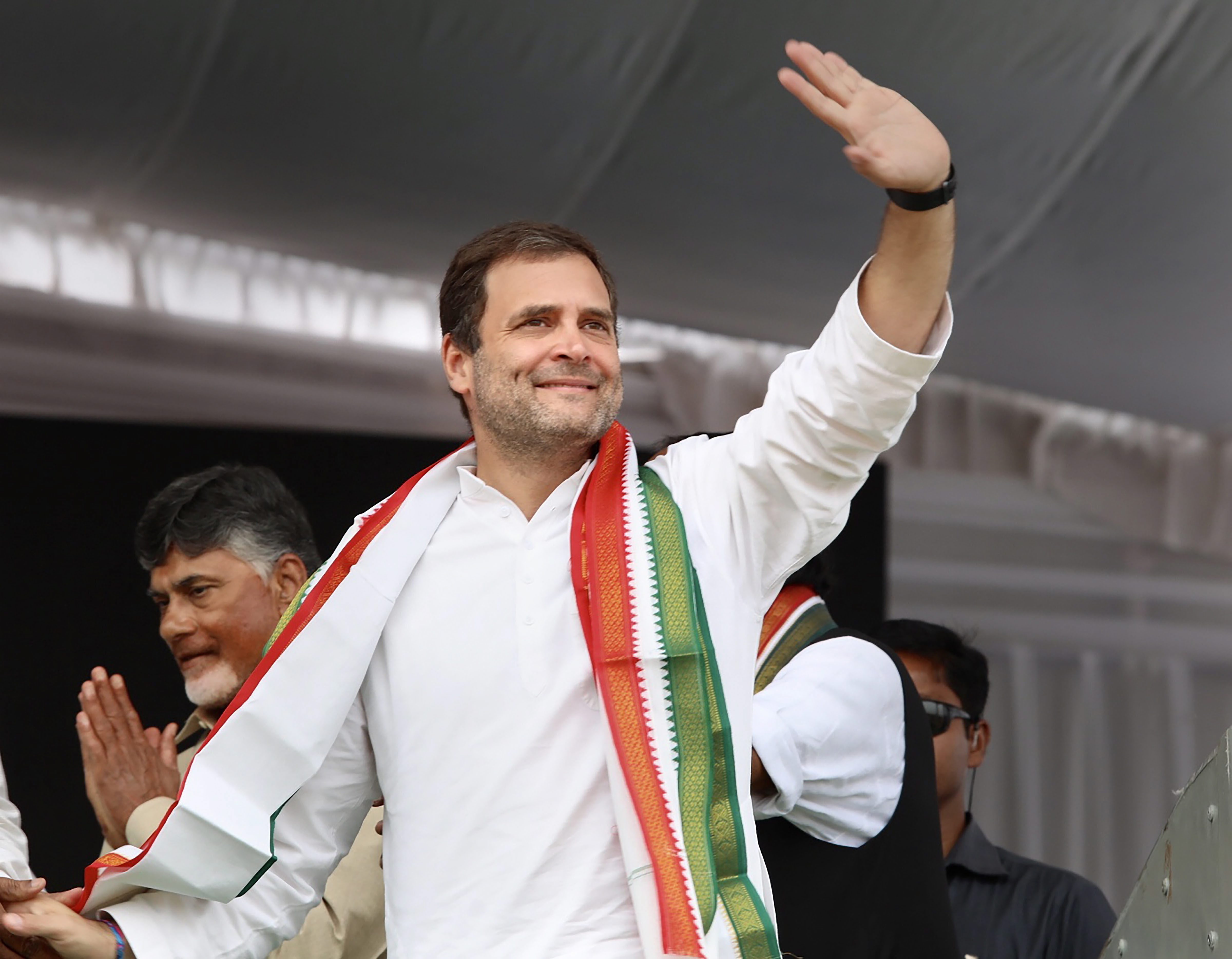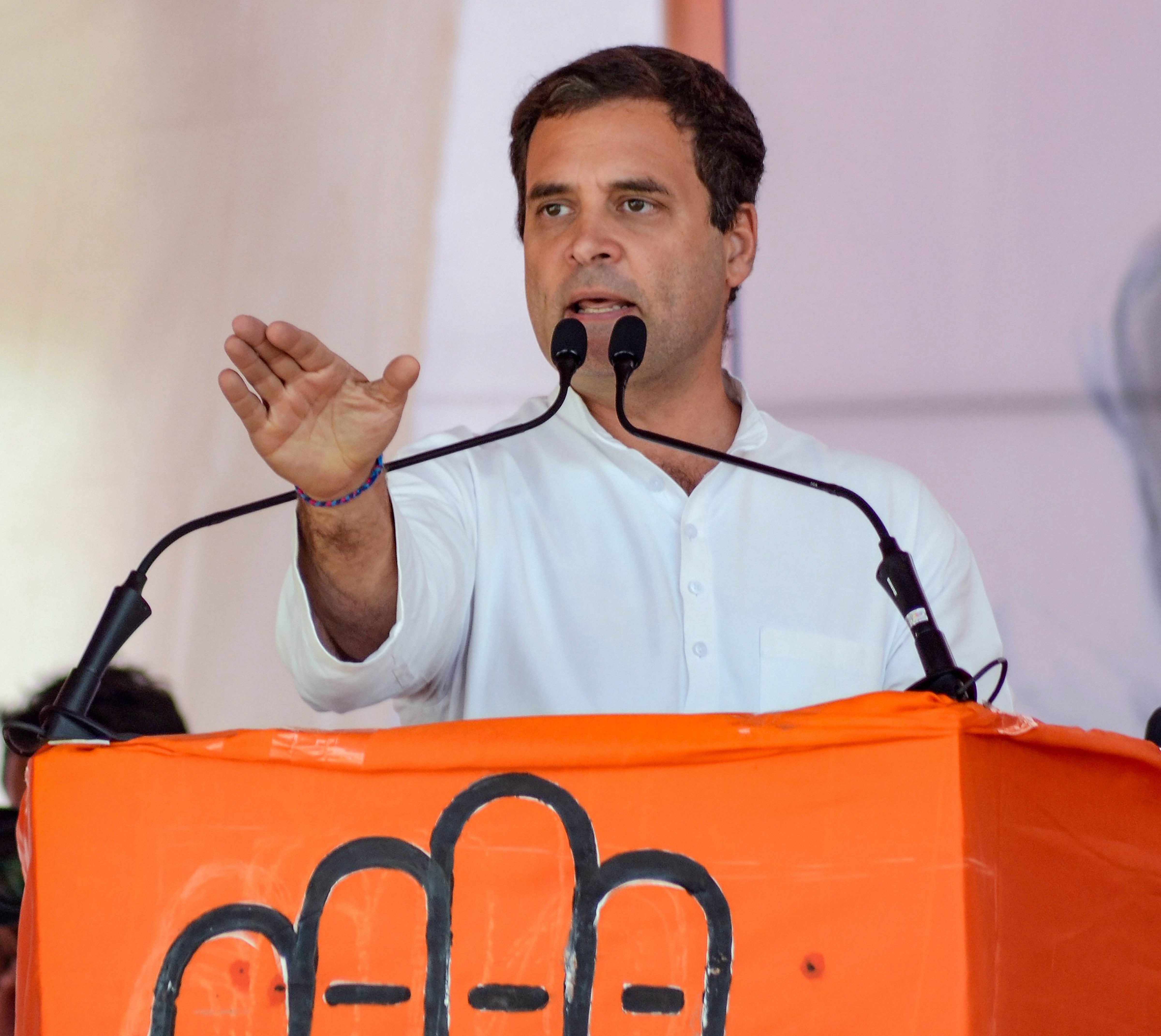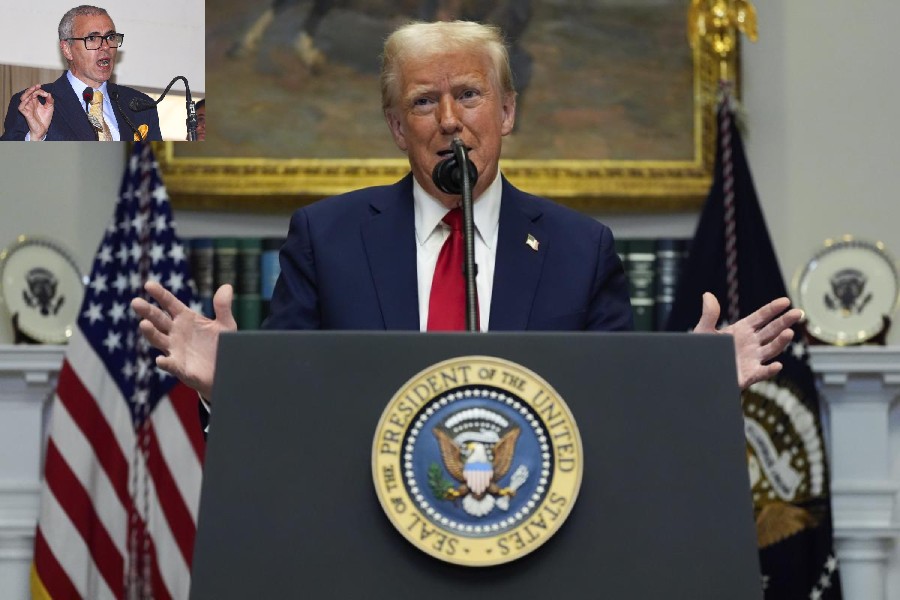The contest for 2019 is no longer a one-horse race; it has been thrown wide open.
Less than six months before the general election, the BJP received its biggest setback since it came to power in 2014 just as the Congress got a major boost after being in steady decline in India’s heartland states.
If Tuesday’s results dimmed the halo of “invincibility” that Narendra Modi has worn for so long, it equally helped Rahul Gandhi shed the “Pappu” tag for good and emerge as a leader in his own right, ready to play a pivotal role as part of an Opposition phalanx in the battle ahead.
The significance of the results must be seen in the context of the BJP’s record over the last four-and-a-half years.
Since 2014, the BJP juggernaut — steered by the Modi-Amit Shah duo —had seemed nearly unstoppable as it rampaged through the length and breadth of the country and won state after state.
It stuttered to a halt in some of the ruling party’s bastions on Tuesday with the BJP facing a rout in Chhattisgarh, a decisive defeat in Rajasthan, and a steep decline in Madhya Pradesh.
The outcome is particularly galling for the Modi-Shah duopoly since the BJP was in direct contest with the Congress in all three states. It is thus not just an electoral setback but also an ideological defeat of their avowed goal of establishing a “Congress-mukt” Bharat.
For Rahul, the results are the best first anniversary gift he could have asked for. It was exactly a year ago that he took over as Congress president.
Long dismissed as a reluctant politician with little appetite or acumen for the cut and thrust of a difficult vocation, Rahul has surprised friend and foe alike by displaying a new seriousness and — more important — doggedness in taking on the Prime Minister and the BJP.
As Congress president, he has shown a clarity of purpose that few would have credited him with earlier. In his mission to take on Modi and puncture his larger-than-life image, Rahul single-handedly raised the issue of Rafale wherever he went.
Even while he focused on “bread-and-butter” issues facing the people (unemployment, farmers’ distress, the demonetisation, corruption), he made the Congress much more open to forming alliances with anyone who was willing to come on board to challenge the BJP’s hegemonic politics.
But his biggest achievement, perhaps, was ensuring that the perennially warring factions in the Congress state units came together to fight a united battle this time.
Since 2014, the Congress had won just two Assembly elections on its own, in Punjab and Puducherry. In Punjab, the victory was attributed to Captain Amarinder Singh and the main adversary was the Akali Dal and not the BJP.

Frankly, Mr Narendra Modi has taught me that lesson... because I see what not to do. ...The sad thing... is that he refused to listen to the heartbeat of this country
Rahul Gandhi on Tuesday evening
Puducherry is much too small a state to count as a sign of resurgence. In Karnataka, the Congress showed unexpected shrewdness couched in magnanimity by offering the chief minister’s post to the Janata Dal Secular and forming a coalition government even as the BJP was prematurely celebrating its emergence as the biggest party in the state.
But in no state had the Congress frontally taken on the BJP and won. That is why Tuesday’s victory seems more spectacular than the actual numbers warrant.
Barring Chhattisgarh, where the Congress trounced the BJP despite the attempts of the Ajit Jogi-Mayawati alliance to turn it into a three-cornered contest, it barely managed to win Rajasthan and was caught in a see-saw battle with the BJP in Madhya Pradesh till late in the night.
Moreover, the Congress fared very poorly in Telangana and its gamble of joining hands with new ally Telugu Desam Party came a cropper. In Mizoram, it was routed by the regional Mizo National Front.
But more than the actual numbers of seats lost and won, Tuesday’s results present a change in India’s political chemistry at a crucial juncture.
Till very recently, Shah’s boast about establishing single-party rule in the country from “panchayat to Parliament” seemed entirely possible. The BJP had become a successful election-winning machine, and Modi was head and shoulders above any other leader and appeared certain to win a second term with ease.

Telegraph infographic
That sense of certainty has taken a knock. Even before Tuesday’s results, the ground had started to shift. The mess in the Reserve Bank of India and the CBI, the exit of the chief economic adviser, the massive marches mounted by farmers who brought their woes to the country’s financial and political capitals, the growing unrest among Dalits, and the ferment on university campuses despite crackdowns may be unconnected. But taken together, they began giving the impression of a government losing its grip.
Earlier in the year, two major allies — first the TDP and then the PDP — quit the ruling coalition. Two days ago, Bihar ally Upendra Kushwaha also left the NDA. Confident of Modi’s overwhelming popularity and ability to control the narrative, the BJP has dismissed these exits as of little consequence.
In his election rallies, Modi — once adept at suiting his speeches to his audiences’ needs — failed to address the disquiet felt by farmers, small traders and unemployed youths. Sounding more like an Opposition leader than the Prime Minister, he focused his attacks on the Congress’s past sins and the misrule of the “dynasty”.

We accept the people’s mandate with humility
Narendra Modi on Tuesday night
On the ground, the BJP-RSS workers felt that the strong Hindutva sentiments they had injected into these heartland states over the years would see them through, apart from the development and social welfare measures of the state and central governments.
That the BJP managed to nearly hold on to Madhya Pradesh even after 15 years of incumbency and did not get routed in Rajasthan should temper the Congress’s jubilation.
The results in both states confirm the need for a broad alliance (pre-poll and post-poll) against the BJP in the Lok Sabha elections rather than any attempts to make it a Congress-versus-BJP or Rahul-versus-Modi battle.
Addressing the media after the results, Rahul appeared aware of this imperative. He underlined that even though the Congress had failed to reach an understanding with the BSP or the SP in the Assembly elections, they were “ideologically” on the same side.
He also made it clear that bread-and-butter issues would be the mainstay of the Lok Sabha campaign. The Congress will steer clear of communally polarising issues that the BJP will seek to trap it in.
The BJP is still the most formidable political organisation in the country today, and Modi remains popular, particularly among the entrenched and the aspiring middle classes. And he still has the power to change the narrative. But when a juggernaut gets dented so close to the finishing line, it can find it difficult to regain its earlier speed.













